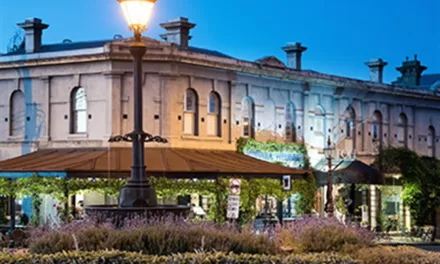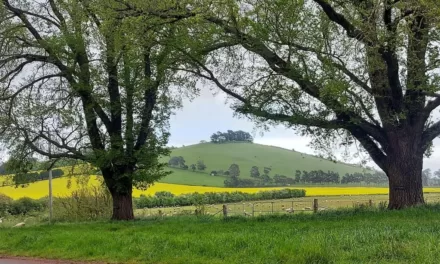An electoral representation advisory panel is reviewing the electoral structure of Hepburn Shire Council.
Changes to the electoral structure are required to comply with the Local Government Act (2020) which requires that there be an equal number of councillors for each ward in the municipal district or that councillors are elected “at large” to represent the whole of the municipal district.
Hepburn Shire Council was created in 1995 as part of the Kennett restructuring of local government in Victoria. As a result of the restructure, 210 councils were amalgamated and realigned to form 78 councils and one borough (Queenscliffe).
Hepburn Shire was formed by combining the Shires of Creswick and Daylesford & Glenlyon and parts of the former Shires of Kyneton and Talbot.
With a population of around 16,000, Hepburn is one of the smallest local government areas in Victoria. The communities comprising the Shire had little sense of common identity at the time of amalgamation and have little in common now.
After a period of oversight by administrators, elections were held for councillors for Hepburn Shire in 1998 and thereafter in four-yearly intervals. The current ward system was adopted as a best fit for representation based on population numbers with five wards and seven councillors with Birch and Creswick wards having two Councillors each.
Hepburn Shire Councillors over that period of time have had strong connections with their wards and have in the main worked hard to represent the interests and wishes of their constituents. Indeed given a lack of identity with Hepburn as a whole, many Councillors could be described as quite parochial.
In a Council with significant pressure from an underfunded asset base (with 200 plus poorly maintained buildings, swimming pools and hundreds of kilometres of council roads), limited funds from rates (because of large tracts of non-rate-paying crown land forests and the impact of local government rate capping), it is perhaps not surprising that Councillors have been fiercely competitive rather than collaborative.
The Local Government Act requires the number of councillors to be between 5 and 12. The smallest councils might have 5 councillors. Many of the larger councils have 9 arranged as 3 councillors for 3 wards. Other arrangements are quite varied – some have up to 12 wards with one councillor each. Twenty-two of the 79 Victorian councils are elected at large. The undivided councils include a range of different sizes and configurations of population from small rural shires such as Moyne to cities, such as Wodonga.
When the last review of the electoral structure was undertaken for Hepburn in 2020, the recommendations supported the status quo. This was largely based on a lack of interest from the community (only five submissions were made to the review) and the difficulty in adapting the existing ward system in a way that would continue to recognize communities and the distribution of small townships.
One possible structure considered by the previous review was to have three wards each with three councillors. This is the model used by some of the more progressive councils at present. It would see Hepburn increase the number of councillors to nine. With some adjustment for existing boundaries, this model would combine Creswick and Cameron (Clunes) wards, and would combine Coliban (Trentham) and Holcombe (Glenlyon)wards and see some extension around the perimeter for Birch (Daylesford and Hepburn Springs) ward possibly to include Eganstown, now a distant part of Creswick ward. This model could provide for more equitable representation but has the downside of an increased number of councillors (and an associated increased cost).
A model with one councillor per ward would have problems with population distribution and would result in dividing Creswick in half and splitting Daylesford from Hepburn Springs and seems unsuitable for the needs of the Shire.
An electoral representation advisory panel has been formed to review the electoral structure of Hepburn Shire Council. A community engagement process will seek input from the electorate.
The panel will consider if the council has an appropriate number of councillors and whether the electorate should be one large undivided area or should be divided into wards. In any case, the existing ward structure will change.
Given that the existing model has to change in line with the requirements of the Local Government Act, then it is important for the community to make its views known. It would appear that there are two viable possibilities:
- Unsubdivided with 7 councillors elected at large by all eligible voters for the Shire. This provides for a fair and equitable outcome, and possibly a more cohesive, less parochial council.
- Three Wards with three councillors, (nine councillors in total). This is also a fair and equitable model but more expensive because of two additional councillors.
Online public information sessions about the review will be held at 12 noon on Monday 6 February and at 6 pm on Tuesday 7 February 2023. Visit the VEC website at vec.vic.gov.au/hepburn and click the link to attend the live online event.
The panel will welcome submissions from the local community. Submissions for the Hepburn Shire Council review open on Wednesday 8 February 2023 and close on Wednesday 1 March 2023. A submission guide and fact sheet are available on the VEC website.
The panel will consider the submissions and the requirements of the law to propose options for the council’s structure in a preliminary report which will be published on March 29. The preliminary report will also be opened for public comment until April 19. A public hearing will be held on April 26 for people who wish to speak to their submissions.
The panel will then make a final recommendation to the Minister for Local Government in a report to be released on May 24. If the Minister accepts the recommendations, the structure for Hepburn Shire Council will apply at the October 2024 local council elections.





